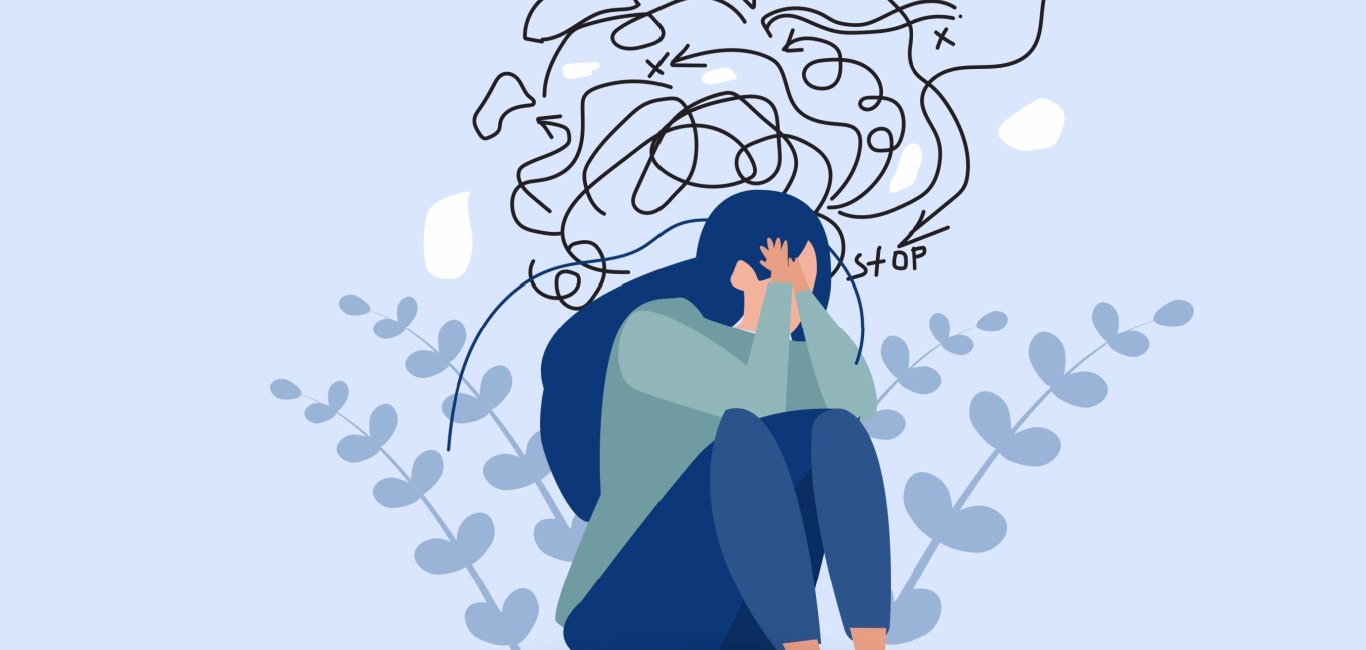
The term ‘personality’ is mostly understood or likened to words like ‘character’ or ‘identity’. However, experts stress that it is more than what meets the eye and understanding it in totality will help one understand personality disorders better. “Personality traits represent patterns of thinking, perceiving, reacting, and relating that are relatively stable over time. Personality disorders exist when these traits become so pronounced, rigid, and maladaptive that they impair work and/or interpersonal functioning,” explains Dr Ambu Pandey, a senior resident in the department of psychiatry at BRD Medical College in Gorakhpur.
Understanding personality disorders (PDs)
The Diagnostic and Statistical Manual of Mental Disorders 5th edition (DSM 5) defines general PDs as long-term patterns of behaviour and inner experiences that differ significantly from what is normatively expected. They affect the way individuals think about themselves and others, the way of responding emotionally, the way of relating to other people, and the way of controlling one’s behaviour.
Individuals with personality disorders have abnormal thought processes, feelings, and behaviour that makes it difficult for them to connect with others. Thus, they can find it challenging to take part in friendly, instructive, and family activities or gatherings.
These subtypes of PDs are grouped under Cluster A, Cluster B, and Cluster C.
Clusters of PDs
There are different types of PDs that are categorised based on similar characteristics and symptoms. They are as follows:
Cluster A
Cluster A includes three personality disorders with the commonality of odd, aloof features.
- Paranoid Personality Disorder – It is characterised by long-standing suspiciousness and mistrust of people in general
- Schizoid Personality Disorder – This group is characterised by a lifelong pattern of social withdrawal. Individuals with this disorder are often perceived as eccentric, lonely, or isolated
- Schizotypal Personality Disorder – It is segmented by thought patterns of magical thinking, peculiar notion, ideas of reference, illusions, and derealisation
Cluster B
Cluster B includes four personality disorders with the common features being dramatic, impulsive, and erratic .
- Antisocial Personality Disorder – This segment is classified by an inability to conform to the social norms that ordinarily govern many aspects of a person’s adolescent and adult behaviours
- Borderline Personality Disorder – It is characterised by a volatile emotional state, mood, behaviour and object relations, and self-image
- Histrionic Personality Disorder – This is marked by an excitable and emotional state of behaving in a colourful, dramatic, extroverted fashion with the inability to maintain deep attachments
- Narcissistic Personality Disorder – A heightened sense of self-importance, lack of empathy, and grandiose feelings of uniqueness is what would describe this type of personality disorder
Cluster C
Cluster C includes three personality disorders sharing common features of being anxious and fearful.
- Avoidant Personality Disorder – Is characterised by extreme sensitivity to rejection and often leads to a socially withdrawn life. Individuals with this diagnosis are commonly described as having an inferiority complex.
- Dependent Personality Disorder – Is differentiated by the tendency to subordinate their own needs to those of others, get others to take responsibility for major areas of their lives, lack of self-confidence, and discomfort when left alone for even a brief amount of time
- Obsessive Compulsive Personality Disorder – is characterised by emotional constriction, orderliness, perseverance, stubbornness, and indecisiveness, along with perfectionism, and inflexibility
Other specified personality disorder
The category of other specified personality disorder is for disorders that do not fit into any of the PD categories described above. Passive aggressive personality and depressive personality are some examples. A person with more than one personality disorder, without meeting the complete diagnostic criteria of any one disorder is given this diagnosis.
Possible causes of PD
There is no single cause for the development of PDs.. Research has shown that genetics and abuse/trauma play a role in the development of PD.
- Genetic Factors – Many studies have validated that genes play a huge role in being one of the possible causes of PDs. One such study noted that PDs are modestly to moderately heritable. The author, Ted Reichborn-Kjennerud, also mentions in the paper that genetic factors reflect broad vulnerability to PD pathology or negative emotionality, high impulsivity or low agreeableness, and introversion.
- Trauma – Research has found a link between childhood trauma and the development of PDs. Trauma and abuse have also been recognised by the American Psychological Association to play a role in the cause of PDs.
Research by Shirley Yen on the longitudinal study of PDs supports an association between the severity of PD and traumatic exposure.
How are PDs diagnosed?
“We all have some traits of different personality types, but they are not disorders. This is something we need to be mindful of while making a diagnosis”, says Dr Pandey. There are different sets of questions that the doctor might ask about one’s current symptoms, past mental health issues, family and relationship history, and any substance problems to better understand one’s concerns.
“Individuals with personality disorders are more prone to developing issues such as substance abuse, behavioural addictions, mood disorders, and adjustment disorders which are important factors to keep in mind while diagnosing,” he adds. Therefore, the diagnosis of a PD may take some time to establish since a mental health professional will need time to get to know the person as well as the comorbid conditions.
Dr Pratap Sharan, PhD AIIMS Delhi, in his paper, An overview of Indian research in personality disorders, mentions that when it comes to the Indian population, it is important to keep the cultural aspect in mind. The western standards of assessing PDs might not be completely valid for our general local population. “The clinical epidemiology studies have employed questionnaires and interviews developed in the West, mostly without local adaptations, showing discrepant results in Indian population.”
Understanding the Holistic Treatment Method
This model includes pharmacotherapy (medications), psychotherapy, and crisis management.
Pharmacotherapy – Medicines, mostly antidepressants, are usually used for comorbid conditions such as anxiety and depression or to help people to deal with their symptoms. However, there are no specific medications to treat PDs.
Psychotherapy – Therapy is the most effective long-term treatment of PDs. Psychotherapy involves a licensed clinical psychologist, psychiatrist, or counsellor exploring and understanding the individual’s thoughts, motivations, and feelings. It helps in building insights, learning coping techniques, and making positive behaviour changes. A few of the psychotherapy models include,
- Cognitive Behavioural Therapy (CBT)
- Dialectical Behavioural Therapy (DBT)
- Psychoanalysis
- Psychoeducation
Crisis Management – People with PDs need crisis management intervention since they have trouble coping with stressful situations. According to Dr Pandey, they have high suicidality and self-harm tendencies which requires emergency assistance. However, this is a temporary solution to provide safety. In general, long-term hospital admissions are not recommended for people with PDs.
Other coping techniques
Supriya Seth (name changed), 20, a communication student in Mumbai, says, “I blamed myself for everything when I got diagnosed with borderline personality disorder. But a heart-to-heart talk with my therapist who made me aware of my condition, empowered and motivated me to heal. I was able to draw the lines between my illness and who I am as a person.” She also joined a support group that helped her immensely, “understanding that I am not alone helped me deal with the feeling of isolation.”
Seth is not alone in her journey of healing. Debrati Mukherjee (name changed), a 26 -year-old researcher, who was also diagnosed with BPD when she was 18, recalls, “The one thing that helped me the most was grounding myself by meditation and by being mindful of my triggers. Therapy helped me with accepting my diagnosis and making me realise that I am resilient and strong.”
A few of the other things that were common during the conversation with Seth and Mukherjee about what helped them to cope were:
- Writing a journal – This activity helped them explore their emotions and deal with them
- Staying active – Some form of physical activity daily helped them to regulate their mood
- Avoiding alcohol and smoking – Slowly moving away from both helped them to tackle worsening symptoms
- Staying connected – Family and friends helped them deal with loneliness that the PD brought with it


















3 Responses
Found this article on LinkedIn, it is really helpful and insightful. Thanks!
This is very elaborate.
Good job
Thank you for taking the time out to read this 🙂